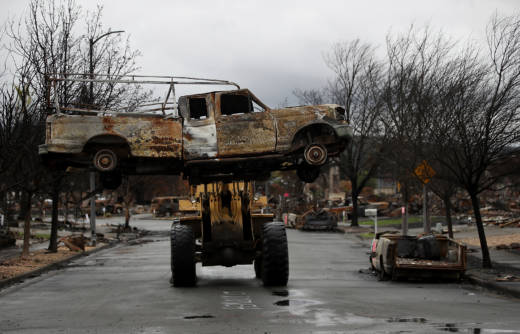Pacific Gas & Electric wants its customers to pay for the costs of the October 2017 wildfires that tore through northern California, destroying more than 8,000 buildings and killing 44 people. Under legislation now at the state capitol, PG&E customers would be charged an involuntary fee to help the utility company pay off settlements stemming from pending wildfire lawsuits.
The legislation comes just weeks after Cal Fire investigators concluded that PG&E power lines and poles were responsible for 12 of the October wildfires, prompting hundreds of lawsuits against the utility.
AB33 would allow PG&E to use state-issued bonds to pay for property damage, personal injury and fire-fighting costs resulting from multiple blazes last October. PG&E customers would pay off the bonds in the form of a “non-bypassable” charge on their bills. From the Chronicle:
‘That means even customers who generate most of their own electricity with a rooftop solar array or who buy their electricity from a community choice program such as CleanPowerSF would still pay the charge.’
PG&E could be liable for billions of dollars in damages in wildfires that destroyed 8,880 buildings and killed 45 people. The company told shareholders in June that it has set aside 2.5 billion dollars in expected liability. But that could be a fraction of the total cost. AB33 explains that the burden on PG&E would be too great:
‘…the magnitude of potential damage claims undermines Pacific Gas and Electric Company’s ability to invest in the infrastructure necessary to meet the state’s aggressive wildfire mitigation and clean energy plans and has the potential to create an unsustainable hardship for customers if passed on in the form of higher rates through the typical ratemaking processes.’
John Franzman, who lost his Fountaingrove home in the fires, blasted the proposal.

